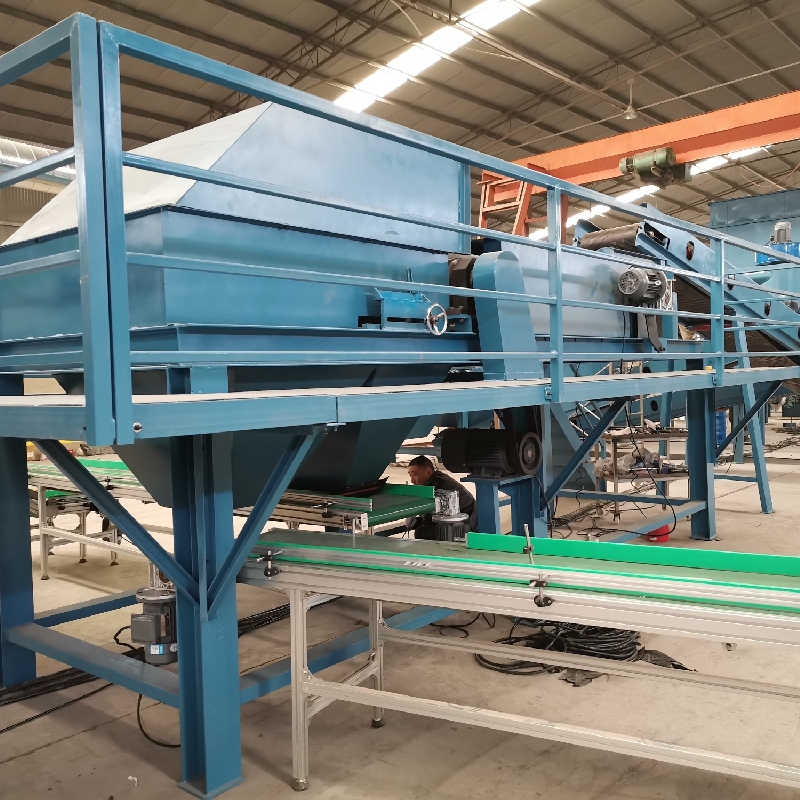

Tach . 15, 2024 04:39 Back to list
The Significance of Scrap Yard Shredders in Recycling
In an age where environmental sustainability is crucial, the role of scrap yard shredders has become increasingly indispensable. These powerful machines are not only vital for the efficient breakdown of scrap materials, but they also play a pivotal role in promoting recycling and reducing waste.
Scrap yard shredders, fundamentally, are designed to shred a variety of materials, including metals, plastics, and electronic waste. By reducing large items into smaller, manageable pieces, these shredders facilitate the subsequent sorting, processing, and recycling of materials. For instance, when vehicles are retired, shredders can quickly dismantle the scrap metal and other components, allowing for recovery and reuse. This process not only saves space in landfills but also conserves natural resources by reintroducing valuable materials into the production cycle.
One of the most significant benefits of using scrap yard shredders is the efficiency they bring to the recycling process. Traditional methods of breaking down materials can be labor-intensive and time-consuming. Shredders, equipped with powerful motors and sharp blades, can dramatically speed up this process. This efficiency translates into cost savings for scrap yards, which can then pass on these savings to manufacturers who rely on recycled materials. Additionally, faster processing times allow scrap yards to handle larger volumes of material, leading to increased profitability and better resource management.

Moreover, the shredding process enhances the quality of recycled materials. When scrap metal or other materials are shredded, they are more uniform in size, which leads to improved separation during recycling. As a result, the purity and quality of the final recycled product are enhanced. This is particularly important in industries where high-quality raw materials are essential for production, such as automotive and electronics.
The environmental impact of shredders goes beyond mere efficiency and material recovery. By facilitating the recycling of scrap materials, these machines help reduce greenhouse gas emissions associated with raw material extraction and processing. Mining and refining metals, for instance, are energy-intensive processes that contribute significantly to carbon emissions. By recycling scrap metal through shredders, we can decrease the demand for virgin materials, thereby reducing the overall carbon footprint of manufacturing industries.
Furthermore, scrap yard shredders contribute to the circular economy by promoting the continual use of resources. In a circular economy, products are designed with longevity in mind and are maintained, reused, and recycled at the end of their life cycles. Scrap shredders play a crucial role in this system by ensuring that materials do not become waste but instead are reprocessed and reintegrated into new products.
In conclusion, scrap yard shredders are critical components of the recycling industry. They enhance efficiency, improve the quality of recycled materials, and reduce environmental impacts, thereby supporting the transition to a sustainable future. As we continue to address the pressing challenges of waste management and resource conservation, it is vital to recognize and invest in technologies that facilitate recycling, making scrap yard shredders an essential piece of the puzzle. Embracing these innovations can lead to a cleaner planet, one shred at a time.
Latest news
Troubleshooting Common Eddy Separator Problems
NewsJul.04,2025
The Role of Metal Recycling Plants in Circular Economy
NewsJul.04,2025
The Impact of Recycling Line Pickers on Waste Management Costs
NewsJul.04,2025
Safety Features Every Metal Shredder Should Have
NewsJul.04,2025
How Industrial Shredders Improve Waste Management Systems
NewsJul.04,2025
How Cable Granulators Contribute to Sustainable Recycling
NewsJul.04,2025